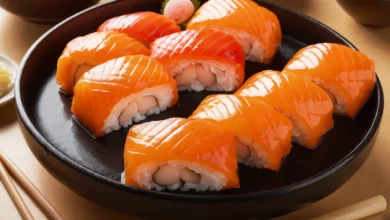Homemade Fish Food Recipe: A Nutritious and Easy DIY Option for Your Fish

Providing your pet fish with the right nutrition is key to keeping them healthy and happy. While store-bought fish food is convenient, many fish enthusiasts prefer to make their own homemade fish food to ensure their aquatic pets receive fresh, high-quality ingredients. Crafting your own fish food allows you to customize the diet based on the specific nutritional needs of your fish, which can lead to improved vitality, better coloration, and longer lifespans.
In this blog, we’ll guide you through a simple yet nutrient-packed fish food recipe that’s suitable for a variety of freshwater and saltwater fish species. Not only will this DIY recipe ensure your fish are getting the best, but it’s also cost-effective and easy to prepare at home.
Why Make Homemade Fish Food?
Many pet owners opt for homemade fish food for the following reasons:
- Custom Nutrition: You can tailor the recipe to meet the specific dietary needs of your fish. Some fish require more protein, while others thrive on plant-based diets.
- Quality Control: You know exactly what goes into your homemade fish food, ensuring there are no fillers or artificial ingredients that can sometimes be found in commercial options.
- Freshness: Homemade fish food allows you to use fresh ingredients that can offer better nutritional value than processed, store-bought food.
- Cost-Effective: Over time, making your own fish food can save money, especially if you buy ingredients in bulk.
Frequently Asked Questions About Homemade Fish Food
1. Can all types of fish eat homemade fish food?
Yes, most fish can eat homemade fish food, but it’s important to adjust the ingredients based on whether your fish are herbivores, carnivores, or omnivores. Herbivorous fish need more plant-based ingredients, while carnivores require higher levels of protein.
2. How long does homemade fish food last?
When properly stored, homemade fish food can last for up to a month in the refrigerator and up to three months in the freezer. Be sure to portion the food into small servings and freeze the excess to ensure freshness.
3. Can I make fish food without a blender?
While a blender makes the process easier, you can finely chop or grate ingredients by hand if you don’t have one. However, a blender ensures a smoother consistency that’s easier for fish to consume.
4. What ingredients should I avoid in homemade fish food?
Avoid adding ingredients that contain harmful additives, preservatives, or oils. It’s also important to avoid high-fat meats, as they can harm your fish’s digestive system.
5. Can I feed homemade fish food to fry (baby fish)?
Yes, but you should modify the recipe to include smaller, easily digestible particles, like powdered ingredients, or use a blender to achieve a finer consistency for the fry.
DIY Fish Food Recipe: A Step-by-Step Guide
Ingredients:
- 1 cup raw fish fillets (tilapia, cod, or other white fish)
- 1/2 cup shrimp or krill (optional for added protein)
- 1/4 cup fresh vegetables (spinach, peas, zucchini, or carrots)
- 1 tablespoon spirulina powder (for added nutrients)
- 1 teaspoon fish oil (rich in Omega-3 fatty acids)
- 1 unflavored gelatin packet (to bind the ingredients together)
- Water (as needed)
Instructions:
- Prepare the Fish and Shrimp:
Start by boiling the fish fillets and shrimp (if using) in a small pot of water until fully cooked. Once cooked, let them cool, then chop them into small, manageable pieces. - Steam the Vegetables:
Steam the vegetables until they are soft but still retain their nutrients. Avoid overcooking them, as this can reduce their nutritional value. After steaming, chop them finely or puree them in a blender. - Blend the Ingredients:
Place the cooked fish, shrimp, and vegetables into a blender or food processor. Add the spirulina powder and fish oil, then blend the mixture until it reaches a smooth consistency. You may need to add a small amount of water to help the ingredients blend smoothly. - Prepare the Gelatin:
Dissolve the unflavored gelatin in a small amount of boiling water, following the instructions on the packet. Once dissolved, mix the gelatin into the fish and vegetable puree. The gelatin will help bind the ingredients together, making the food easier to portion and store. - Form the Food:
Pour the mixture into ice cube trays or small molds to form individual portions. This makes it easier to feed your fish without overfeeding or wasting food. - Freeze the Portions:
Place the trays in the freezer and allow the fish food to freeze completely. Once frozen, you can pop out the individual cubes and store them in an airtight container in the freezer for up to three months. - Feeding:
To feed your fish, simply thaw one cube of the homemade fish food and feed in small amounts, ensuring your fish consume it within 5 minutes. Avoid overfeeding, as excess food can pollute the tank water.
Nutritional Benefits of Homemade Fish Food
- High Protein Content:
The inclusion of fish fillets and shrimp ensures that your homemade fish food is rich in protein, which is essential for fish growth and health. - Vitamins and Minerals:
Fresh vegetables such as spinach and peas provide essential vitamins and minerals, such as Vitamin C and iron, which boost your fish’s immune system. - Omega-3 Fatty Acids:
Fish oil is a great source of Omega-3 fatty acids, which promote heart health and improve the appearance of your fish’s skin and scales. - Spirulina:
This superfood is packed with nutrients that enhance your fish’s coloration, improve digestion, and strengthen their immune system.
Why Homemade Fish Food is the Best Choice for Your Fish
Making fish food at home gives you complete control over the ingredients and nutritional content. You can adjust the recipe based on the specific needs of your fish, ensuring they receive the exact nutrients they need to thrive. Plus, by using fresh, high-quality ingredients, you can avoid unnecessary fillers and preservatives found in some commercial fish food brands. Not only will your fish be healthier, but they’ll also display brighter colors and more energy.
Conclusion
Creating homemade fish food is a rewarding experience that offers numerous benefits for both you and your fish. By customizing the ingredients and ensuring the food is rich in essential nutrients, you’ll help your fish lead a longer, healthier, and more vibrant life. Plus, this cost-effective and environmentally friendly approach ensures your fish are fed with only the best. Try this simple recipe, and enjoy the satisfaction of providing a superior diet for your aquatic friends.





